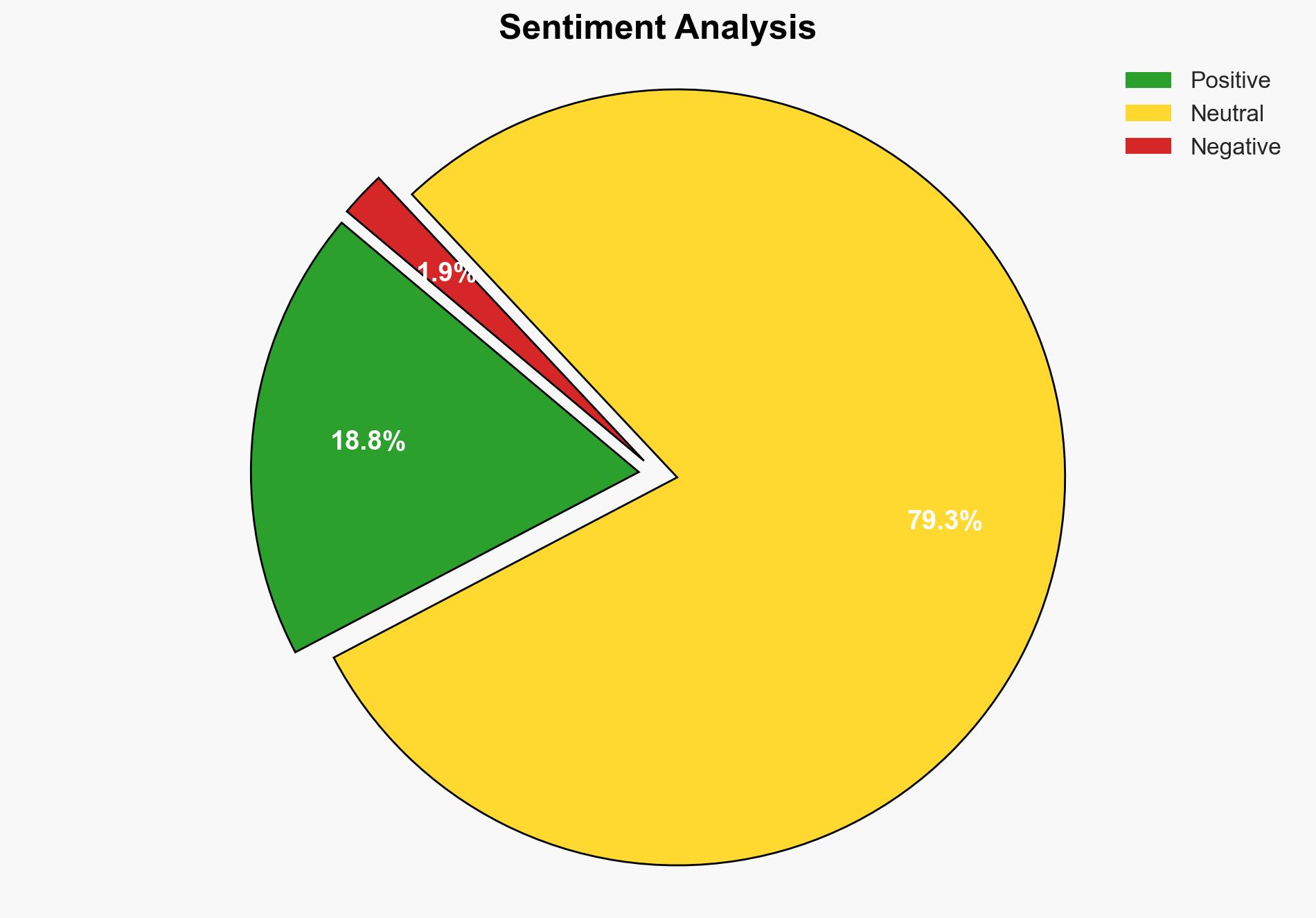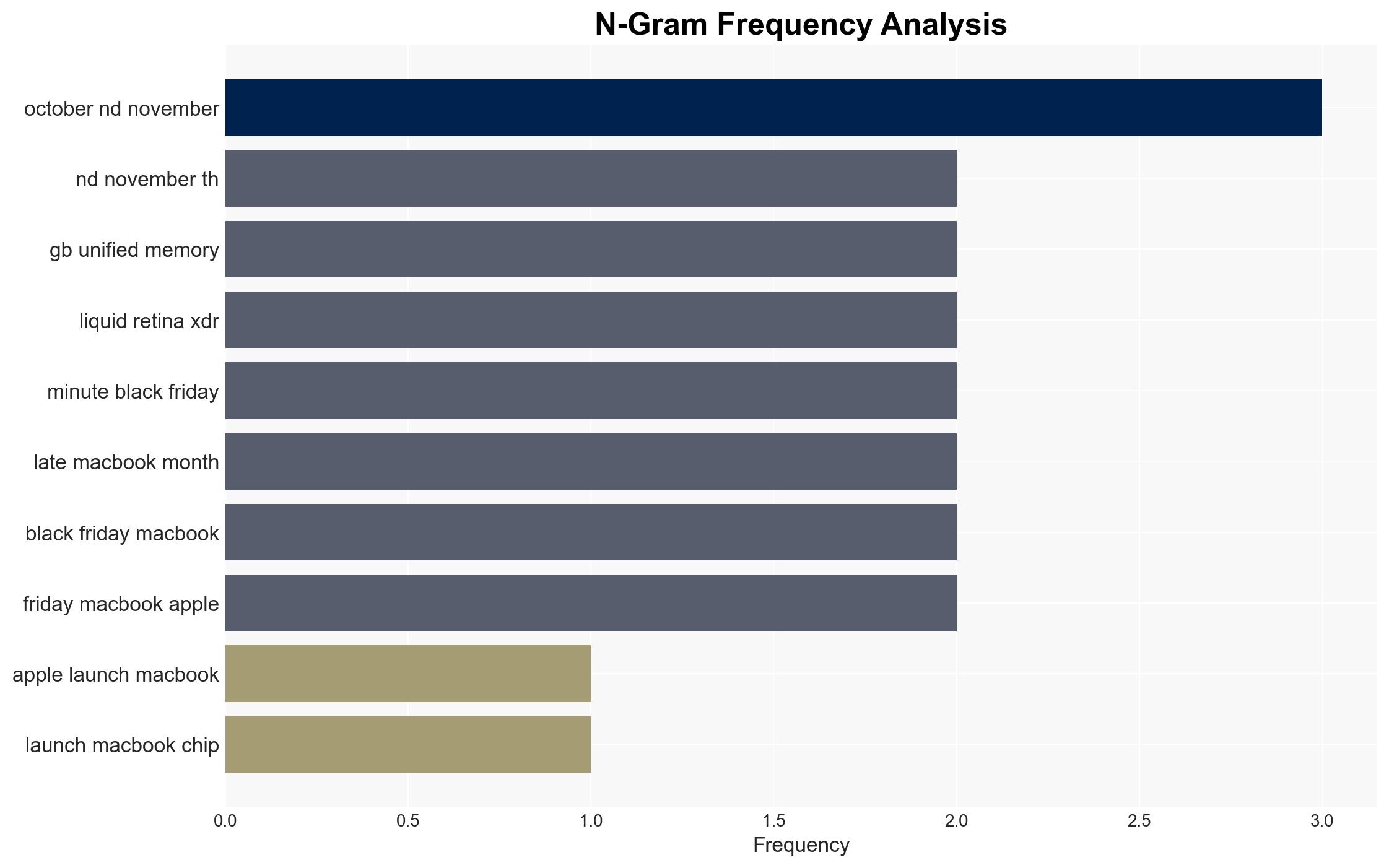Barely a Month Old MacBook Pro With M5 Chip Already Sees Heavy Price Cuts on Amazon – Kotaku
Published on: 2025-11-20
AI-powered OSINT brief from verified open sources. Automated NLP signal extraction with human verification. See our Methodology and Why WorldWideWatchers.
Intelligence Report:
1. BLUF (Bottom Line Up Front)
The most supported hypothesis is that the aggressive price cuts on the new MacBook Pro with the M5 chip are a strategic move by Apple and Amazon to capture market share during the competitive Black Friday sales period. This is likely a response to anticipated competition and market saturation. Confidence Level: Moderate. Recommended action includes monitoring sales trends and competitor responses to assess the effectiveness of this pricing strategy.
2. Competing Hypotheses
Hypothesis 1: The price cuts are a strategic move by Apple and Amazon to increase market penetration and capitalize on the Black Friday sales period, aiming to boost sales volume and brand loyalty.
Hypothesis 2: The price reductions are a response to weaker-than-expected initial sales of the new MacBook Pro, indicating potential issues with market acceptance or product performance.
Hypothesis 1 is more likely due to the timing of the price cuts aligning with Black Friday, a period known for increased consumer spending. Additionally, Apple has a history of using strategic pricing to drive sales during key retail periods.
3. Key Assumptions and Red Flags
Assumptions include the belief that the price cuts are a planned marketing strategy rather than a reaction to poor sales. A red flag is the potential for deceptive marketing practices, where the price cut may not represent a genuine discount but rather a temporary promotional tactic. Another assumption is that the M5 chip and associated technology are performing as expected without significant defects.
4. Implications and Strategic Risks
The implications of this pricing strategy include potential market disruption, with competitors possibly forced to lower their prices, leading to a price war. There is also a risk of devaluing the brand if consumers perceive frequent price cuts as a sign of poor product quality. Economically, this could impact Apple’s profit margins if the strategy does not significantly boost sales volume.
5. Recommendations and Outlook
- Monitor sales data and consumer feedback to evaluate the success of the pricing strategy.
- Prepare for potential competitive responses, such as price adjustments from other tech companies.
- Best-case scenario: Increased market share and brand loyalty without significant impact on profit margins.
- Worst-case scenario: A price war leading to reduced profitability and brand perception issues.
- Most-likely scenario: Short-term sales boost with moderate impact on long-term market positioning.
6. Key Individuals and Entities
Apple Inc. and Amazon are the primary entities involved in this strategic pricing decision. Specific individuals are not identified in the source text.
7. Thematic Tags
Cybersecurity, Market Strategy, Consumer Electronics, Retail Sales, Competitive Analysis
Structured Analytic Techniques Applied
- Adversarial Threat Simulation: Model and simulate actions of cyber adversaries to anticipate vulnerabilities and improve resilience.
- Indicators Development: Detect and monitor behavioral or technical anomalies across systems for early threat detection.
- Bayesian Scenario Modeling: Quantify uncertainty and predict cyberattack pathways using probabilistic inference.
Explore more:
Cybersecurity Briefs ·
Daily Summary ·
Support us





